SEEING MATH IN NEW WAYS
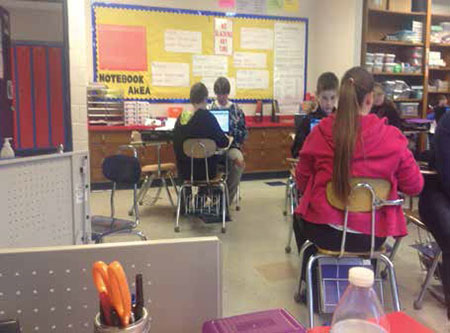
Adding edtech solutions to the equation in K–12 math classrooms is helping students achieve new levels of mastery and confidence. Here some innovative educators share ideas and best practices.
EVERYONE EXCELS
Since implementing a blended learning model in her seventh-grade math classroom at Gilmer County High School in Glenville, West Virginia, Kelly Barr’s students have had the highest WV General Summative Assessments math scores in the school.
INDEPENDENT LEARNERS

The blended model allows special education students in her inclusive math classes to excel, Barr says, because “they can see the math through a more visual way.” In addition, tutorial videos enable all students to become more independent learners. “Students know where to seek the information and will make more of an attempt to solve the problem on their own,” she says. “Through the differentiation that Accelerated Math provides my students, I am remediating and enriching them at the same time.”
The result? Students of all abilities have “a better grasp of often difficult and abstract topics.” They’re “able to manipulate objects or use math manipulatives” and receive instant feedback, and they benefit from “assignments specifically tailored to their needs.”
Barr says focus can be a challenge in the blended classroom, but with a solution called AB Tutor she can monitor all the computers in her classroom simultaneously, message students, and open and close programs—all from her desktop.
Tools and ideas to transform education. Sign up below.
PRODUCERS, NOT JUST CONSUMERS
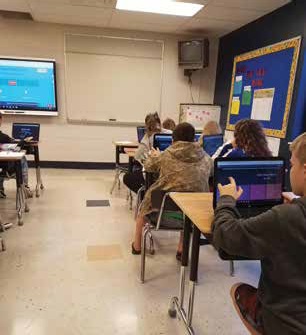
The school’s technology integration specialist (TIS) Traci DeWall helps both teachers and students make the most of technology tools. Barr and DeWall co-teach eight times a year, when students create and share technology-based projects (from PowerPoint presentations to Blendspace lessons to Discovery Education boards). Through these projects, Barr’s students “become producers with technology and not just consumers,” and they look forward to these opportunities “to show off what they know.”
TOOLS THEY USE
GILMER COUNTY
■ AB Tutor
■ Discovery Education
■ ExploreLearning Gizmos
■ Formative
■ Khan Academy
■ Microsoft Office365
■ Padlet
■ Piktochart
■ Quizizz
■ Renaissance Learning Star Math, Star Reading, and Accelerated Math
■ Schoology
■ Tes Teach with Blendspace
■ Virtual Nerd
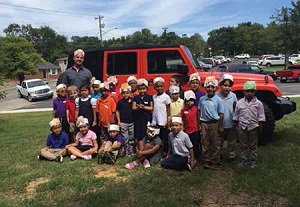

THE PURE JOY OF LEARNING
Lesser teachers might run a mile from a kindergarten classroom composed of 95 percent ELL students who speak six different languages. But Greg Smedley-Warren (or “Mr. Greg,” as he is known) embraces the challenge of this class at J.E. Moss Elementary, a Title I school in Metro Nashville (TN) Public Schools, with joy and enthusiasm—and some exciting AR tools.
With everything going on in his classroom, the tech tools he uses need to be easy to set up and use. “An edtech tool isn’t going to be an asset to my students if they can’t use it independently. And I won’t bring an edtech tool into my classroom if it means more work for me!”
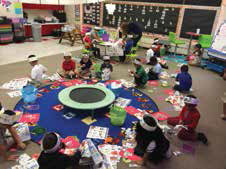
His students’ joy, excitement, curiosity, and willingness to take risks, Mr. Greg says, “make our classroom fun and innovative. They arrive each day with a smile “because they love learning and they love being in our classroom.”
SQUEALS AND GIGGLES: LEARNING COMES ALIVE
The iPads and interactive whiteboard in the classroom literally come alive as Math alive’s 3D animals jump off the screens to teach lessons on greater than/less than, addition, and subtraction. And the students’ improved skills reflect their engagement.
Mr. Greg also uses Letters alive to supplement ABC BOOTCAMP, a component of his TKS (The Kindergarten Smorgasbord) BOOTCAMP curriculum. The goal is to master all 26 letters and sounds in 26 days. “Each day, we introduce a sound and letter and make a silly hat,” he says. “As part of this introduction of letters and sounds, we use the zoo animal AR cards from Letters alive. The AR animals get the kids excited and engaged, plus they’re fun. Each animal makes the kids laugh and squeal and giggle. Using Letters alive to supplement our research-based ABC BOOTCAMP has helped our students succeed as readers and writers while having fun in the classroom! This laughter and joy is what learning should be!”
Learn more at thekindergartensmorgasboard.com
TOOLS THEY USE
MOSS ELEMENTARY
■ Bloomz
■ Interactive whiteboard
■ iPads
■ iTunes
■ Laptops
■ Learning alive Plus (from Alive Studios), including Letters alive and Math alive
■ QR codes
■ SMART Notebook
■ Starfall
LOTS OF TOOLS, USED WELL

Springfield (MO) Public Schools has just completed a three-year 1:1 rollout with Chromebooks for grades 3–12, and the district’s rich technology resources are enhancing both teaching and learning.
“We want teachers to see technology as a means to increase engagement and amplify the great teaching practices they’re already employing,” says Catherine Castillo, coordinator of 21st-century numeracy. Many of them are using (and making) videos to flip instruction in mathematics, giving them more time to meet with students and ensure they’re receiving personalized instruction and intervention when they need it most.
In addition to using adaptive programs such as DreamBox and ALEKS for personalized practice, students have access to digital curricular resources and can collaborate online using tech tools such as Dotstorming, Padlet, and AnswerGarden for problem-solving and feedback.
Castillo has seen improved engagement, and many students are even leading their own conferences with parents, discussing the skills they’ve mastered and their goals.
LEVELING THE PLAYING FIELD
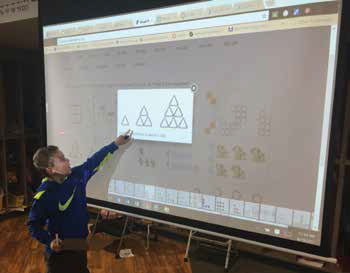
Many teachers are integrating coding, engineering, and robotics into their instruction as well, Castillo says. “As a result, minority groups and girls, who are statistically less likely to enter STEM fields, now have access to opportunities that could potentially lead them down a STEM pathway.”
Using 3 Act Math tasks to show a multimedia clip and then asking students to formulate questions is one example, Castillo says, of an activity in which everyone can participate. “It’s so awesome to walk into a classroom and see all students (with or without IEPs) engaged and contributing to the lesson. Hearing students proving their thinking to each other … is very powerful. That is the ultimate win!”
TOOLS THEY USE
SPRINGFIELD PUBLIC SCHOOLS
■ ALEKS
■ BrainPOP
■ Canvas
■ Code.org
■ Desmos
■ Discovery Education Streaming
■ Discovery Education Techbook
■ DreamBox
■ Ellevation
■ Glencoe Math
■ GoNoodle
■ Google Drive
■ i-Ready
■ iCivics
■ Kahoot!
■ Learning A-Z (Reading, Science, and Raz-Kids)
■ Lexia
■ MathXL
■ Mathalicious
■ Music Studio
■ My Math
■ MyMathLab
■ Nearpod
■ Newsela
■ PebbleGo
■ READ 180
■ ReadWorks
■ Scholastic News
■ SchoolDude
■ Seesaw
■ Starfall
■ StudySync
■ System 44
■ TenMarks
■ WeVideo
OVER 150% GROWTH ON MAP
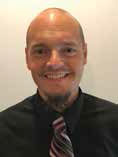
The student body at Saint Lucas Lutheran School, a private K–8 school in Milwaukee, Wisconsin, is highly diverse. When middle-school math teacher Chris Luebke arrived last year, he found that his students’ math skills were “all over the map.” But he didn’t want to just “teach to the middle.” He wanted every student to grow.
FILLING IN POTHOLES
When the school agreed to invest in IXL, Luebke used NWEA data to determine where each student should begin. He’s now able to monitor and provide tailored instruction for every student. Students work at their own pace, learning and practicing the skills they need. “It’s like filling potholes in a road,” Luebke says. “It’s been really eye-opening for students when they can see where the disconnect has happened and go back and correct it. Sometimes, it’s just one or two skills they missed in third grade that are holding them back.” Luebke sometimes uses the platform for whole-class instruction, projecting practice problems on a SMART Board.
HARD WORK PAYS OFF
Students love that the program is “useful and purposeful” and they appreciate the immediate feedback. Seeing improvements in their SmartScores also motivates them. “I tell my students that it’s hard work that makes the difference,” Luebke says. On average, his students grew 150% on the MAP benchmarks over the last school year. He’s especially pleased that both accelerated students and those who had started the year from behind made strong gains.
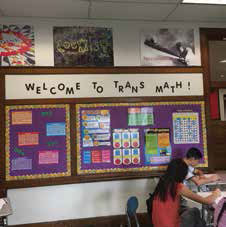
BUILDING STRONG FOUNDATIONS
Students who lack key foundational skills will not be successful in algebra, says Patrice Kentner, special education instructor at the City School District of New Rochelle (NY).
HUGE GAPS
Kentner’s seventh- and eighth-grade students struggle with various disabilities including learning and developmental disabilities, autism, and speech and language impairments. Others, she says, “are very fragmented or have huge gaps in their foundation.” Many students come to her without having mastered multiplication tables, division, or even place value. The fact that these students are also struggling readers further compounds their difficulties with reading directions and solving word problems.
CONFIDENT AND EMPOWERED
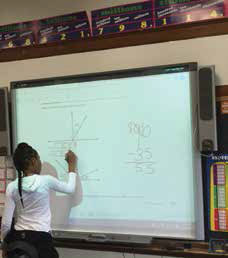
Kentner describes Voyager Sopris Learning’s TransMath as “like a Christmas present.” The program is great for multi-sensory learners and provides pacing to allow students to close the achievement gap in a timely manner as well as “additional practice without the issue of cognitive overload for struggling students.” She also finds the ongoing assessments (both informal and performance) particularly helpful.
Growth in math skills has led to growth in students’ class participation and confidence as well. “I love when I overhear one student offering help to another student who may have made an error or is confused,” Kentner says. “It empowers them … if you can teach the skill, you have mastered the skill. My students may be struggling learners, but each day I see an improvement I am thrilled.”
TOOLS THEY USE
CITY SCHOOL DISTRICT OF NEW ROCHELLE
■ Voyager Sopris Learning’s TransMath
■ iPads
■ Chromebooks
